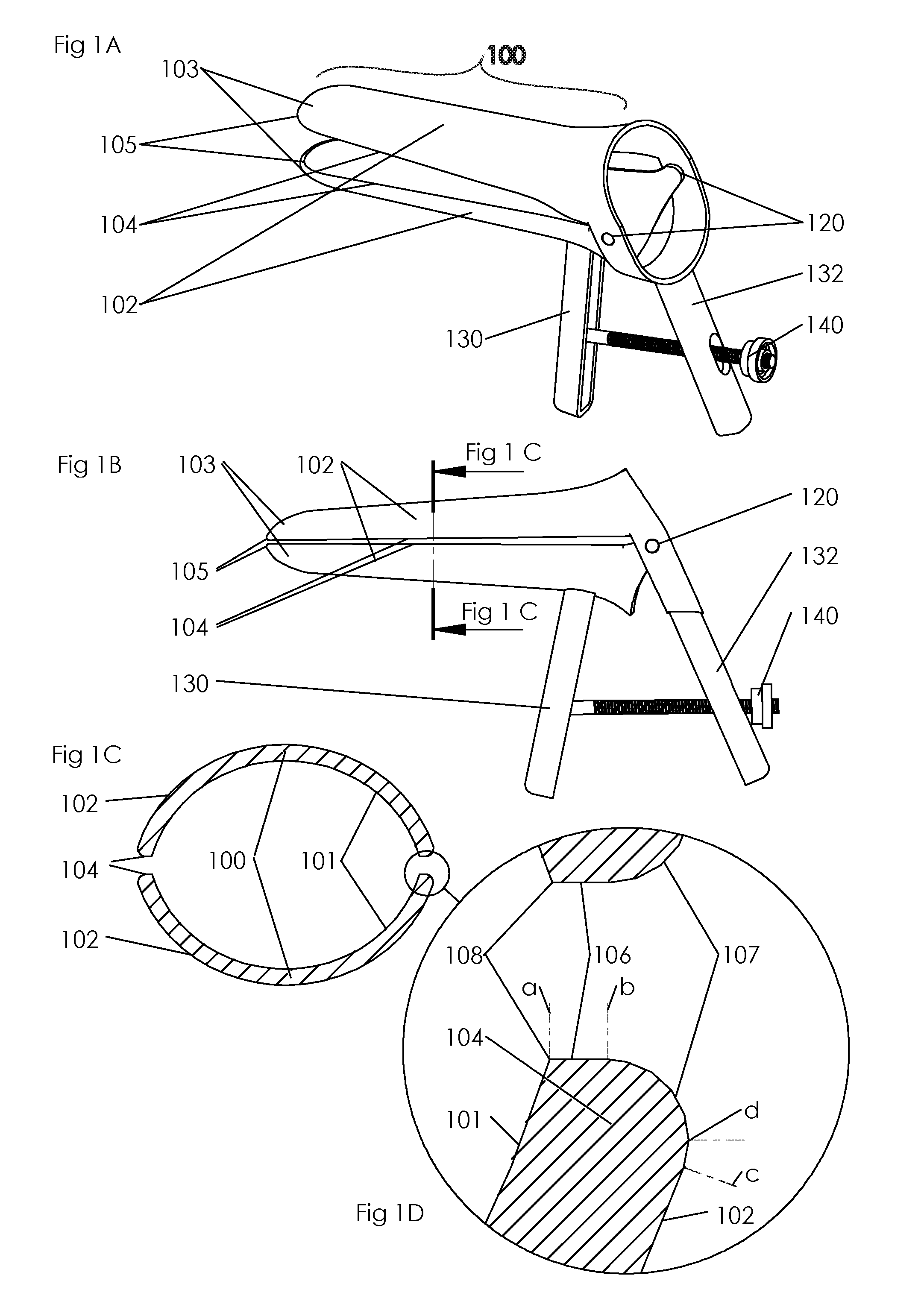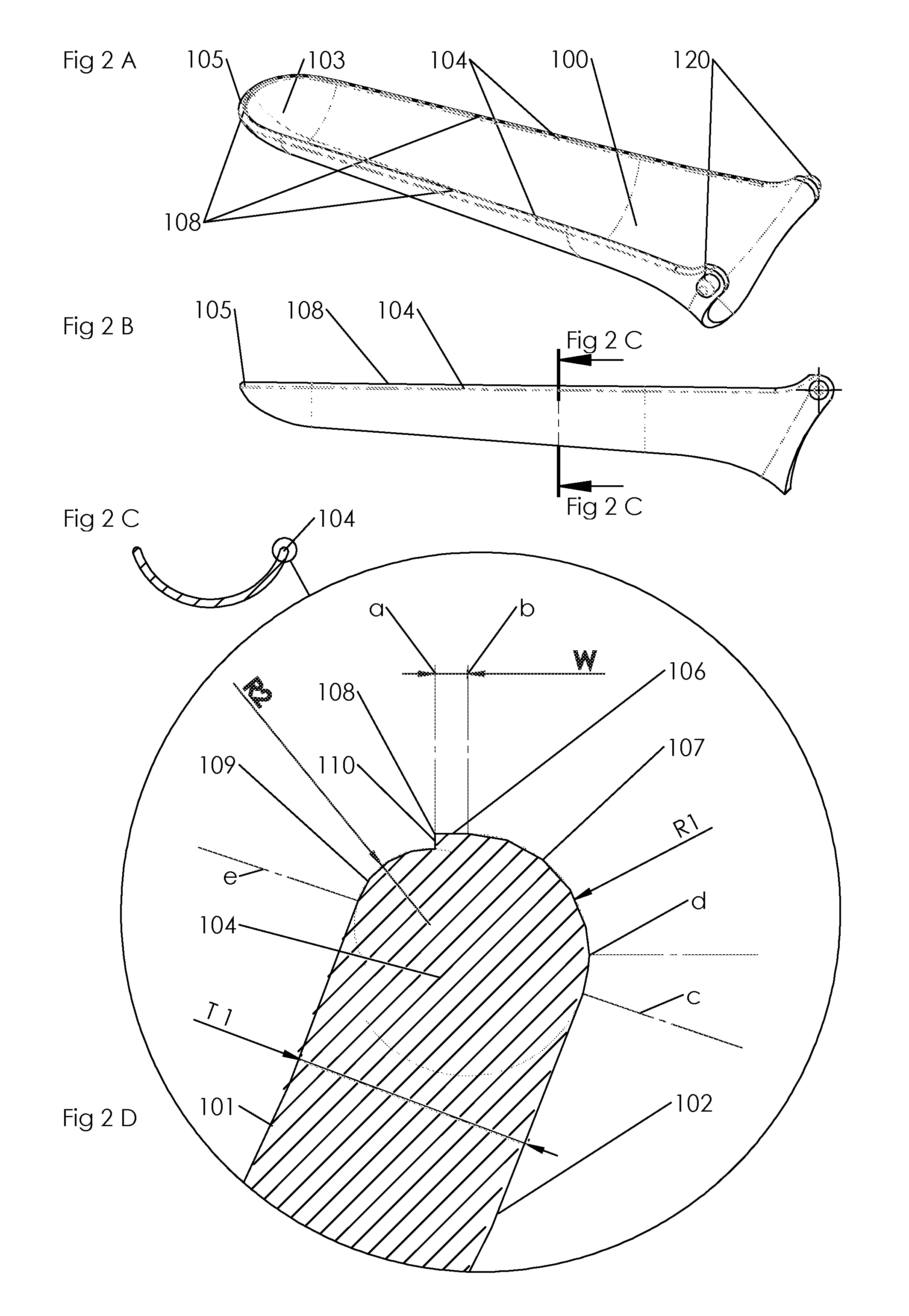Advanced speculum
a technology of speculum and speculum, applied in the field of advanced speculum, can solve the problems of increasing the exposure of the thin blade edge, affecting the function of the patient, affecting the patient's recovery, etc., and achieves the effects of less elastic, and reducing the risk of injury
- Summary
- Abstract
- Description
- Claims
- Application Information
AI Technical Summary
Benefits of technology
Problems solved by technology
Method used
Image
Examples
Embodiment Construction
[0035]FIGS. 1A and 1B depict an embodiment of a commonly used Vaginal Speculum according to prior art, comprising blades or Beak Parts 100, with an Inner Surface 101 and an Outer Surface 102. The Beak Parts 100 have Beak Edges 104 and have Cupped Ends 103 at their respective distal ends. Cup Edges 105 form the edges of the Cupped Ends 103. The Beak Parts 100 are inserted into the vagina in a closed state with the Cupped Ends 103 initiating penetration. Hence the Cupped Ends are referred to as the distal end of the Beak Parts 100 in this application. The Beak Parts are typically coupled in such a way that they can move away from each other or towards each other in an angular or a lateral movement, or a combination of both, to expose part of the interior of the vaginal cavity.
[0036]Typically the common speculum has a Pivoting Joint 120 at the proximal ends of the Beak Parts 100. Once Beak Parts are inserted into the vaginal cavity the First Handle 130, and Second Handle 132 are moved ...
PUM
 Login to View More
Login to View More Abstract
Description
Claims
Application Information
 Login to View More
Login to View More - R&D
- Intellectual Property
- Life Sciences
- Materials
- Tech Scout
- Unparalleled Data Quality
- Higher Quality Content
- 60% Fewer Hallucinations
Browse by: Latest US Patents, China's latest patents, Technical Efficacy Thesaurus, Application Domain, Technology Topic, Popular Technical Reports.
© 2025 PatSnap. All rights reserved.Legal|Privacy policy|Modern Slavery Act Transparency Statement|Sitemap|About US| Contact US: help@patsnap.com



